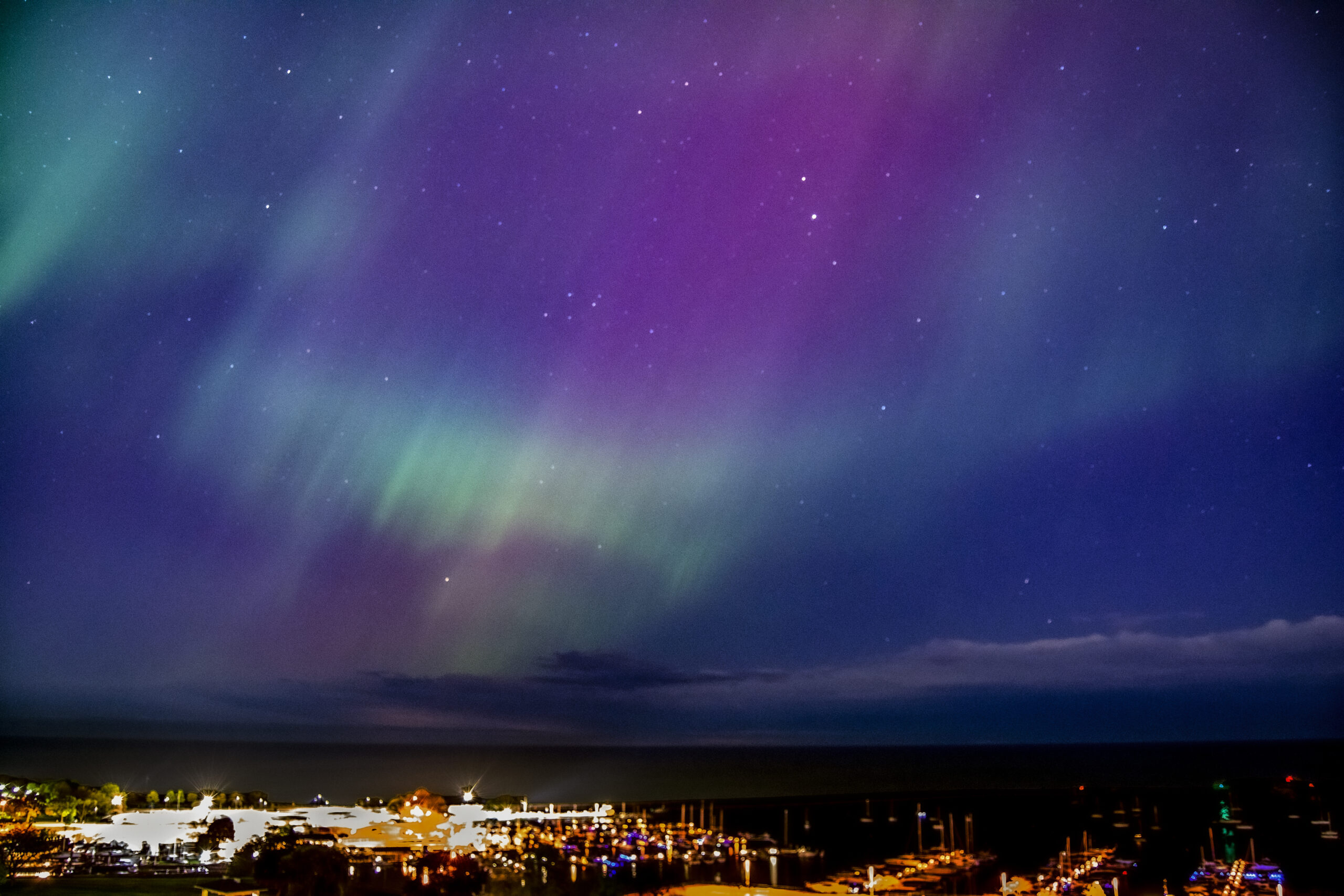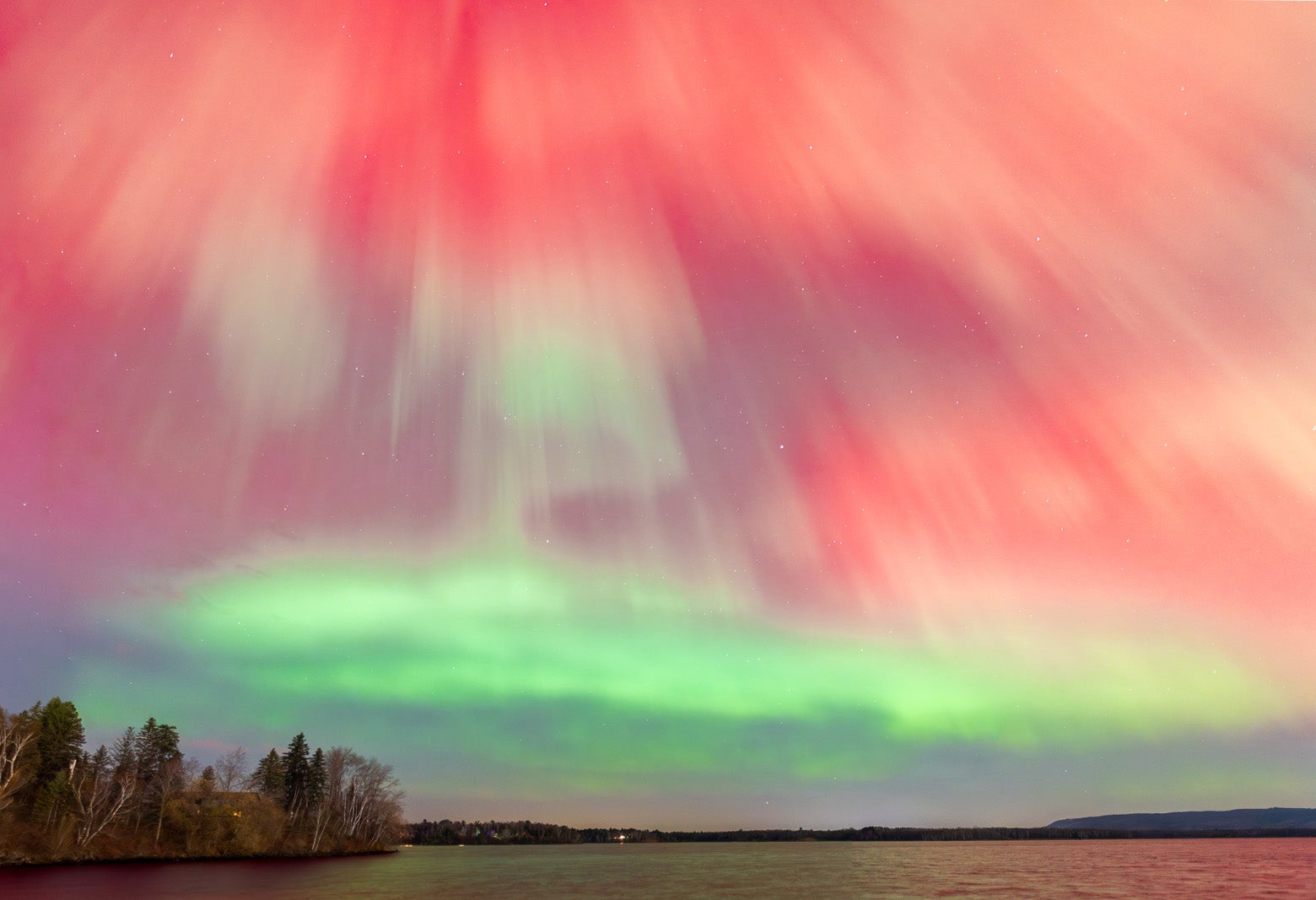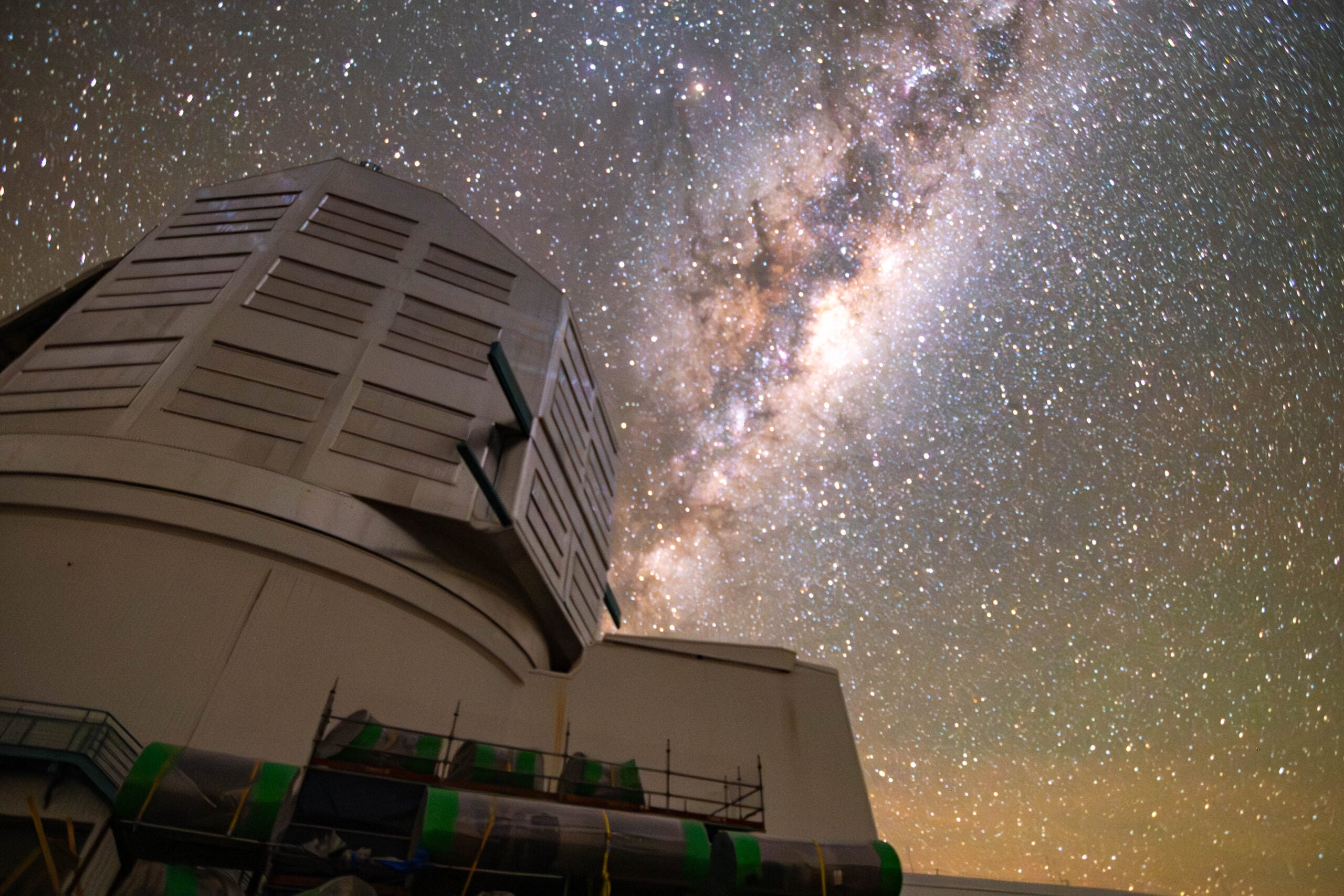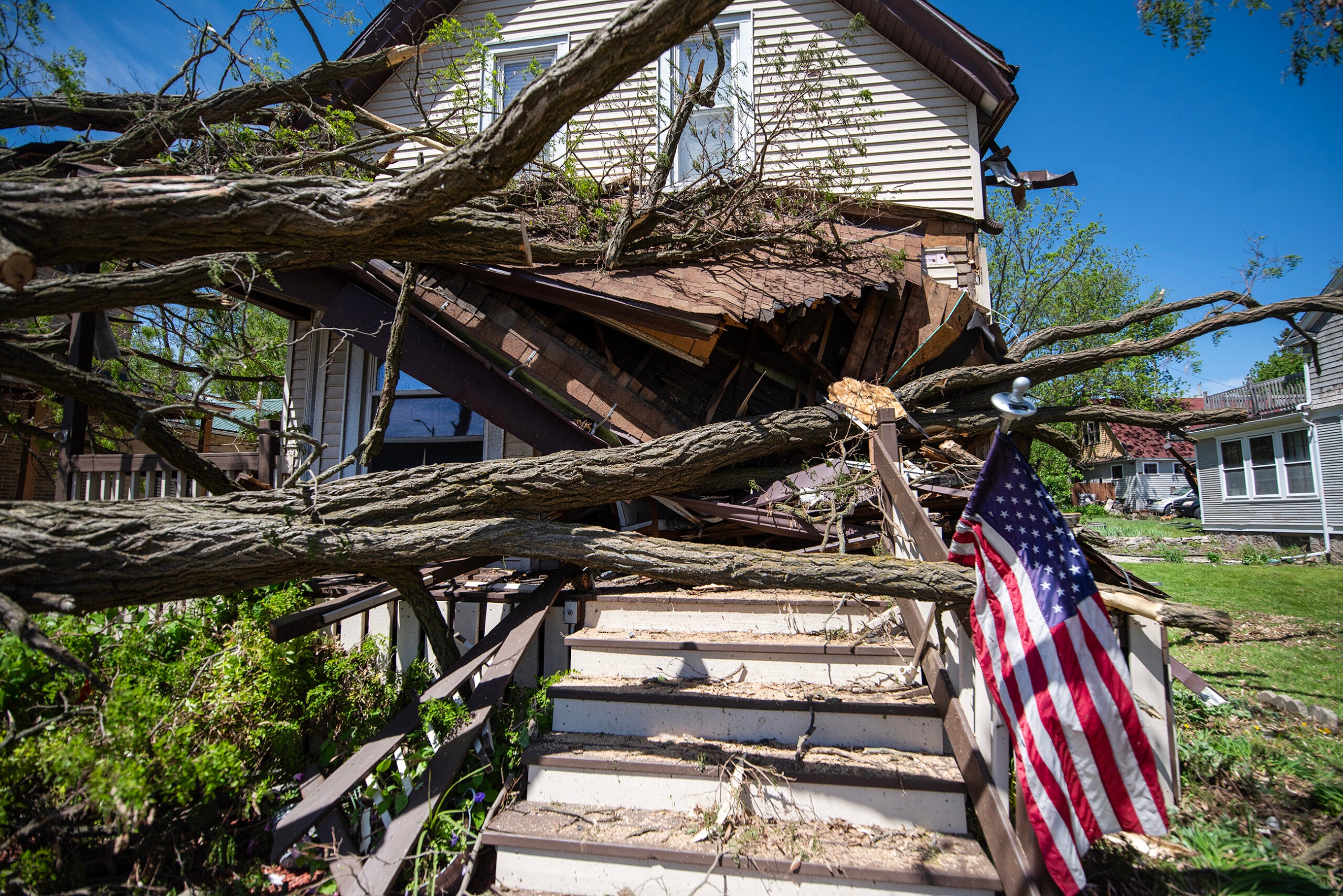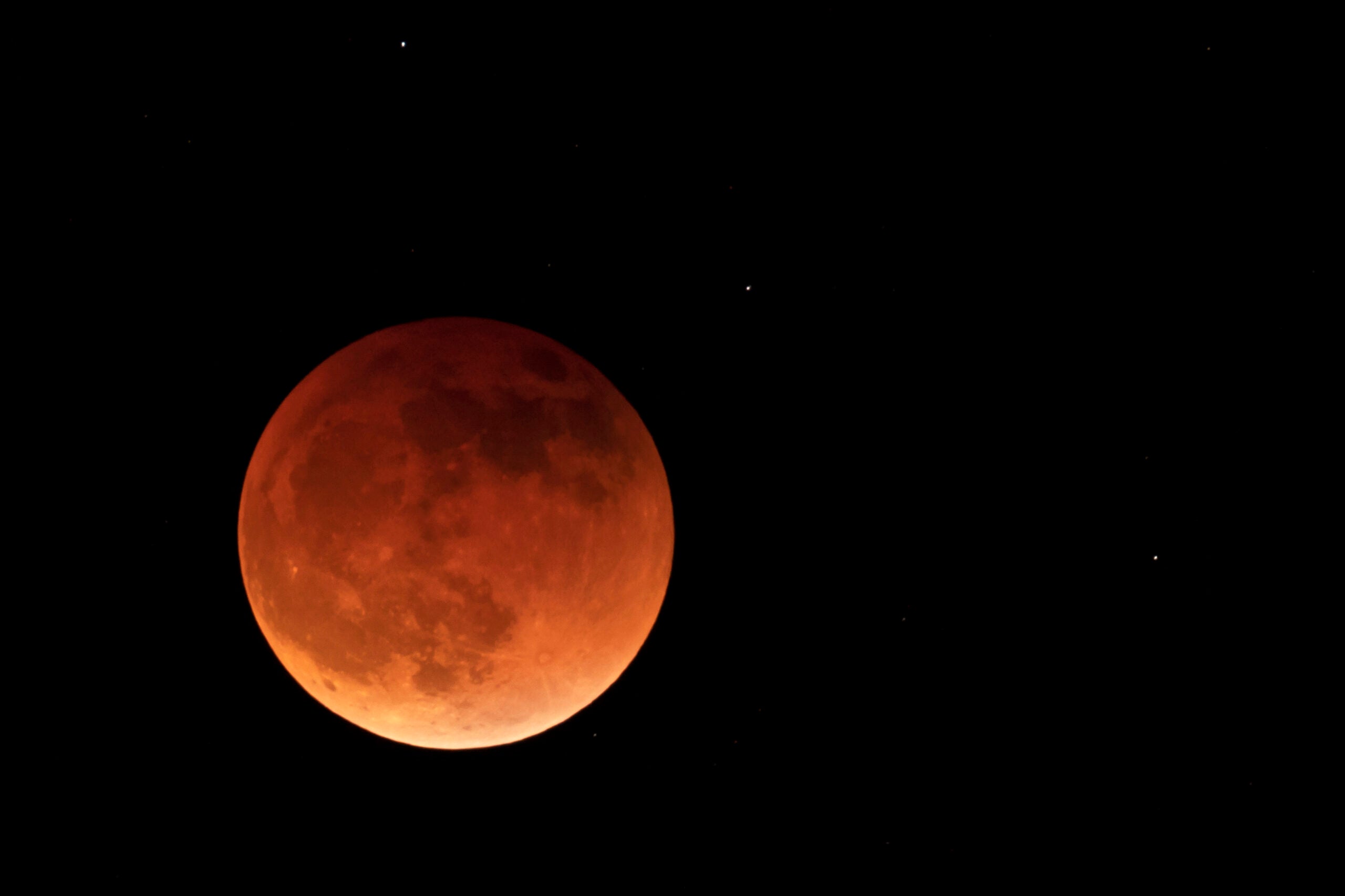Seeing the northern lights was a bucket list item for Shruti Thaker. She had waited 20 years, traveling to Iceland and Canada without luck.
But just after midnight on May 11, she stepped out onto her balcony in downtown Milwaukee and shrieked.
The rare appearance of the Aurora Borealis in Wisconsin that night lit up the skies — and social media — as people who got a glimpse shared their excitement and photos.
News with a little more humanity
WPR’s “Wisconsin Today” newsletter keeps you connected to the state you love without feeling overwhelmed. No paywall. No agenda. No corporate filter.
“It looks like a colored cloud that’s moving very rapidly and kind of dancing quite literally in the sky,” Thaker said. “They were pretty magical.”
What Thaker and other Wisconsinites saw was the consequences of a geomagnetic storm, the result of bulk material from the sun hitting the earth’s magnetic field, causing the green, blue, white and red lights to seemingly dance across the night sky.
The most recent storm this intense was in 2003.
If you missed the chance to see the northern lights this month, you might still get lucky.
Sightings of the Aurora Borealis are predicted to be more intense and more frequent as the sun reaches the peak of its 11-year activity cycle, expected to occur sometime between now and November.
“You’ll have great opportunities to see them in the next couple of years,” said Bryan Brasher with the Space Weather Prediction Center.
Brasher said periods of high activity are “really exciting.”
“Especially at extreme levels, it gives us a window to test our theories, to double check our hypotheses to better our understanding of the sun,” Brasher said.
Solar activity is hard to predict. While scientists expect solar activity to be high for the next few years, forecasters generally need to see an event occur on the Sun before they can reliably forecast an impact on Earth, Brasher said.
He said the timing and intensity of events can be uncertain. The Sun is 93 million miles away from Earth, there are few instruments in space between the Sun and the Earth to take measurements, and observation of the Sun is limited to that part currently facing Earth.
“A lot of what we do is really waiting to see an event on the sun, and then we can analyze what we believe it’s impacted,” Brasher said.
Solar storms, like the one that began on May 10, can impact infrastructure on or near Earth, including potentially disrupting communications, the electric power grid and radio and satellite operations. Brasher said that also includes GPS.
“The best case scenario there, maybe the single is just not as strong, a little weaker, worst case scenario, you could have complete loss of signal for minutes,” Brasher said.
Historically, storms have caused power outages in Canada and Sweden and damaged transformers in South Africa. Brasher said there hasn’t been any reported damage from the geomagnetic storm in May, but it did “stress the system.”
Brasher said the chances over the next few years to get a look at the northern lights are high. He said it’s a matter of staying tuned to the forecasts. Optimal conditions are generally around midnight with cloudless skies and minimal light pollution.
Thaker said she’ll be ready the next time the Aroura Borealis appears in Wisconsin skies, hopefully in Door County.
“It’s just mind-blowing to see and to experience,” Thaker said.
Wisconsin Public Radio, © Copyright 2025, Board of Regents of the University of Wisconsin System and Wisconsin Educational Communications Board.

